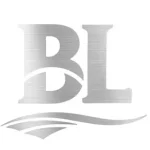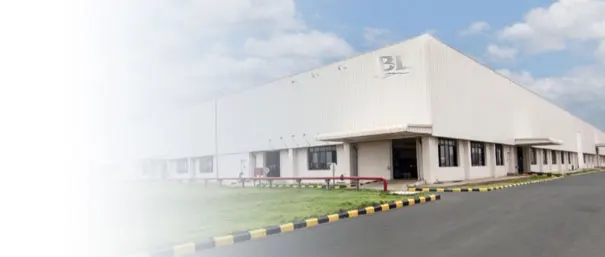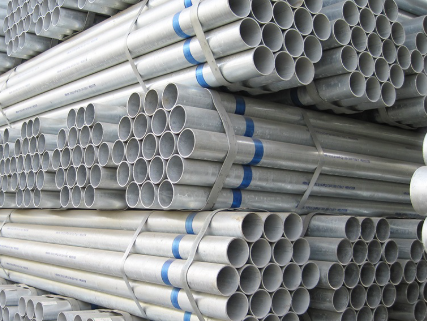The galvanized steel pipe market is entering 2025 with robust momentum, underpinned by resilient construction activity, infrastructure modernization, municipal water upgrades, and a steady recovery in light manufacturing. A defining trend is the accelerated shift toward high-zinc coating specifications (Z350–Z600 and above), driven by longer lifecycle targets, stricter corrosion standards, and whole-life cost calculations used by public and industrial buyers. At the same time, buyers are prioritizing custom sizing—tight OD/ID tolerances, tailored wall thickness, and cut-to-length optimization—to reduce downstream waste and installation time. Together, these dynamics are reshaping procurement strategies and technical specifications across North America, Europe, Southeast Asia, and the Middle East.


As a China-based manufacturer, BaoLi Iron & Steel Co., Ltd. (BaoLi) is closely aligned with these trends. By integrating advanced galvanizing lines, rigorous quality control, and project-level technical support, we help EPC contractors, OEMs, and distributors lock in consistent performance and reliable lead times. This 2025 outlook details demand drivers, coating and sizing standards, application-specific guidance, and a practical sourcing checklist designed to reduce total cost of ownership while improving corrosion resistance and installation efficiency.
Macroeconomic Drivers and End-Market Signals
Infrastructure bills and public utility upgrades remain the backbone of galvanized pipe demand. Water distribution rehabilitation, fire-protection systems, highway guardrails, and utility supports use thicker coatings to withstand marine aerosols, road salt, and acid rain. Industrial buyers—especially in food processing, light chemicals, and HVAC—are adopting higher zinc layers to extend maintenance cycles. Meanwhile, solar mounting systems and agricultural irrigation, once cost-sensitive, are increasingly specified with heavier coatings to reduce warranty claims and corrosion-related downtime.
In emerging markets, urbanization and manufacturing relocation drive consumption of standard sizes (DN15–DN100), but demand for engineered dimensions is rising in refineries, shipyards, and large distribution centers. Distributors report tightening tolerance preferences from OEM customers who want consistent fit-up and predictable welding performance. These shifts collectively favor suppliers with strong metallurgical control and flexible production scheduling.
High-Zinc Coatings: From Compliance to Competitive Advantage
Zinc coating mass is the single most influential determinant of galvanized pipe longevity in corrosive environments. Buyers traditionally specify according to ASTM A53/A123, BS EN 10240, or ISO 1461/9001-aligned frameworks. In 2025, we expect a clear migration from Z200–Z275 to Z350–Z600 classes, especially in coastal regions, industrial atmospheres (C3–C4 per ISO 12944), and buried pipelines with intermittent moisture exposure.
Heavier zinc deposition improves sacrificial protection and slows red rust formation, particularly at cut edges and micro-scratches. However, performance is not only about coating mass—bath chemistry, pre-treatment, and post-galvanizing cooling influence adhesion and uniformity. BaoLi operates with optimized fluxing and controlled withdrawal rates to minimize runs and spikes, enhancing threadability and sealing performance for couplings and grooved fittings.
| Coating Class | Typical Zinc Mass (g/m²) | Representative Standard | Typical Use Case |
|---|---|---|---|
| Z275 | ≈ 275 | ASTM A53 / EN 10240 (low–moderate) | Indoor HVAC, dry warehouses |
| Z350 | ≈ 350 | ASTM A123 / EN 1461 (moderate) | Light industrial, inland outdoor |
| Z450 | ≈ 450 | ASTM A123 / ISO 1461 (enhanced) | Coastal towns, municipal utilities |
| Z600+ | ≥ 600 | ASTM A123 / Project-specific | Marine, chemical zones, long-life assets |
For distributors seeking catalog-ready items, BaoLi’s standard portfolio includes Z275–Z450; for project owners targeting 25–50-year service windows, we offer Z600+ options with documented bath traceability and cross-sectional coating checks.
Custom Sizing and Tolerance Strategies for 2025
Custom sizing enables tighter fit in automated lines, improved hydraulic performance, and lower installation labor. Buyers increasingly request ±0.25 mm wall thickness precision for thin-wall conveyance and ±0.2 mm OD on mechanical applications. Cut-to-length services (1.2–12 m) reduce on-site cutting, scrap, and safety risks. For threaded and coupled pipes, straightness and ovality are critical—small deviations translate to leaky joints and rework costs.
| Parameter | Typical Range (Standard) | BaoLi Custom Capability | Benefit |
|---|---|---|---|
| OD Tolerance | ±0.5–0.75 mm | ±0.2–0.3 mm | Improved fit-up and sealing |
| Wall Thickness | ±10% | ±5% or fixed mm | Predictable pressure ratings |
| Straightness | 1.5 mm/m | ≤1.0 mm/m | Faster installation, less rework |
| Cut Length | Standard 6 m / 5.8 m | 1.2–12 m, tight cut accuracy | Lower site waste and logistics cost |
For robotic welding or automated threading, consistent bevel geometry and chamfer control are crucial. BaoLi’s in-line measurement and SPC (statistical process control) minimize variation lot to lot, ensuring compatibility across different project phases.
Material Grades, Standards, and Compliance
Common substrates include carbon steel grades aligned with ASTM A53, A106 (for higher temperature), and BS EN 10255. For structural applications, ASTM A500 or EN 10219 mechanical properties may be required, while fire-protection pipelines often target UL/FM-compliant product configurations. Coating conformity to ASTM A123 or EN ISO 1461 remains the benchmark; for interior potable water, low-lead and hygiene considerations are essential, with internal cleanliness standards verified by pressure wash and visual inspection protocols.
Traceability is increasingly mandated. BaoLi provides mill test certificates (MTC) with heat numbers, mechanical properties, chemistry, and coating mass verification. Our documentation helps contractors satisfy audit trails and warranty claims, streamlining approvals in regulated environments.
Application Guidance: Matching Coating and Sizing to Environment
Coastal and marine projects should prioritize Z450–Z600+ with robust sealing at joints and periodic inspection schedules. For inland industrial zones with intermittent chemical exposure, aim for Z350–Z450 and confirm compatibility of gaskets and sealants with zinc surfaces to avoid galvanic issues. Agricultural irrigation systems benefit from custom cut lengths to fit pump spacing and manifold designs, minimizing coupler counts. Solar and light-structural frames can reduce maintenance by specifying thicker coatings at ground contact points and splash zones.
Where welding is necessary, pre-cleaning and post-weld zinc touch-up (zinc-rich paints meeting ASTM A780) protect heat-affected zones. Projects with strict aesthetics may consider post-galvanizing passivation to delay white rust during shipment and storage, especially in humid climates.
Supply Chain Considerations for 2025
Lead times are stabilizing but remain sensitive to zinc price volatility and energy costs. Buyers can reduce risk by locking quarterly volumes with flexible size mixes and by pre-approving alternative coating classes for non-critical SKUs. Packaging matters: end caps, VCI films, and bundled strapping prevent transit damage and condensation-related staining. For export shipments, container loading plans that segregate heavy and thin-wall pipes lower deformation risk and protect thread integrity.
BaoLi’s global logistics network supports door-to-door delivery with customs-ready documentation and multi-language support. We coordinate pre-inspection with third-party agencies when specified, reducing port dwell time and project delays.
Sourcing Checklist: What to Verify Before Ordering
- Defined coating mass target (e.g., Z450) with allowable deviation and test method.
- Material grade and mechanical property requirements (yield, tensile, elongation).
- OD/ID and wall tolerances, straightness, ovality, and thread specifications if applicable.
- Cut-to-length needs, bevel angles, chamfers, and end finishing (threaded, grooved, plain).
- Surface finish expectations (passivation, oiling) and packaging standards.
- Documentation: MTC, coating inspection records, compliance certificates (UL/FM, if required).
- Logistics plan, Incoterms, and buffer for seasonal or market-driven lead-time shifts.
BaoLi’s engineering team can review drawings and specifications prior to production to identify potential inconsistencies, reducing RFIs and change orders during installation.
Why Buyers Are Choosing BaoLi in 2025
We combine high-zinc galvanizing expertise with flexible customization. Our product scope spans stainless steel, carbon steel, and galvanized steel in pipes, coils, bars, wires, and plates to support multi-category sourcing. With strict quality control and a “100% customer satisfaction” mindset, BaoLi delivers consistent, audit-ready pipes that meet global standards. Whether you’re building municipal networks, upgrading fire protection, or scaling industrial facilities, we align technical parameters with your performance and budget goals.
Explore our galvanized portfolio to specify coatings, diameters, and lengths that match your project’s lifecycle targets. Start with our product pages:
galvanized steel pipes
and
galvanized steel pipe category
for detailed options and technical data.
Outlook Summary
The 2025 galvanized steel pipe market will reward buyers who adopt higher zinc coatings and deploy custom sizing to reduce lifecycle costs. By partnering early with a technically capable supplier, stakeholders can balance durability, compliance, and schedule certainty. BaoLi Iron & Steel Co., Ltd. stands ready to engineer, manufacture, and deliver galvanized solutions that withstand demanding environments—on time and at scale.



